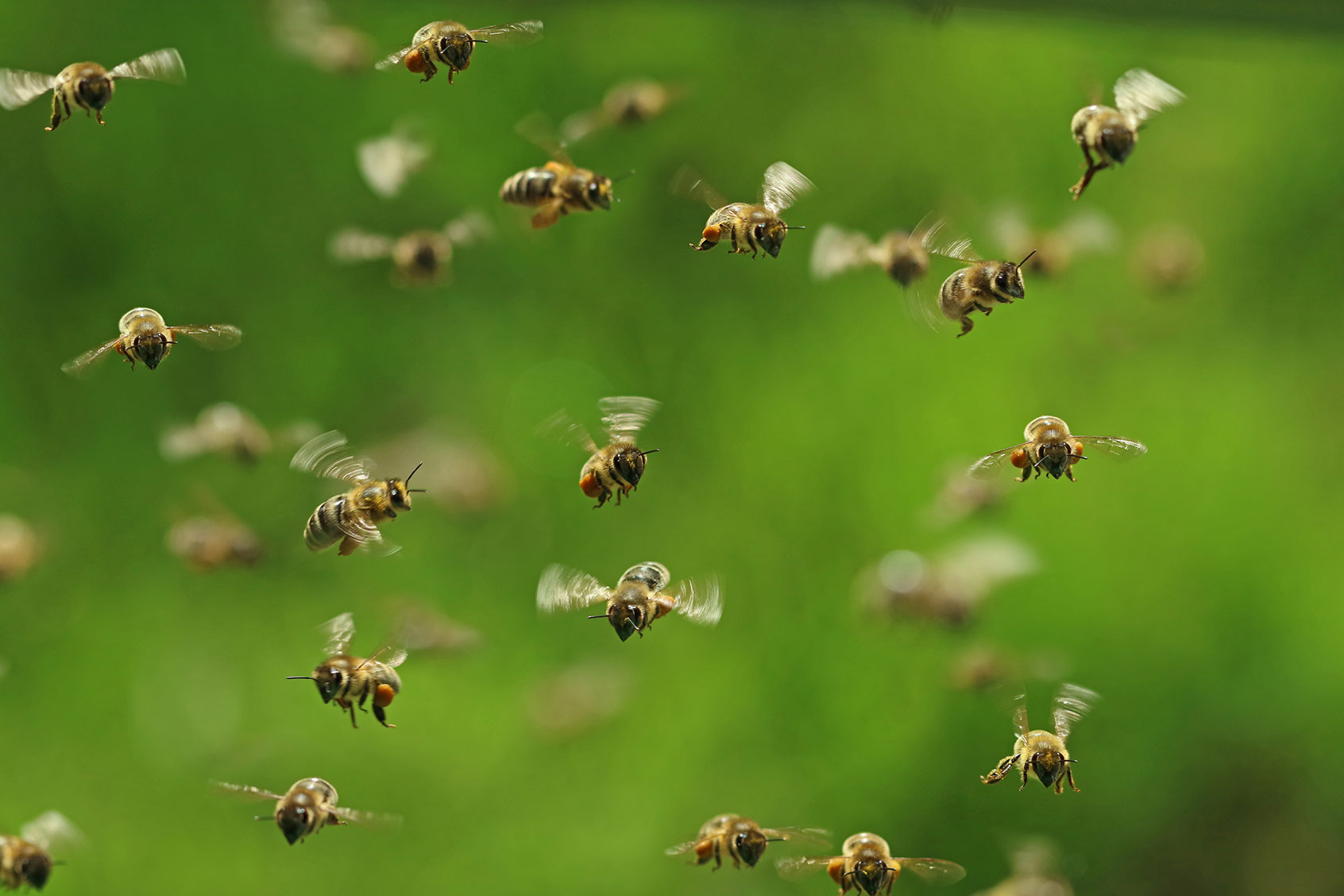A common thought experiment posits that a butterfly flapping its wings in Brazil can, over time, lead to a chain of events that sets off a tornado in Texas. It seems this old saw may be more true than previously thought, as a new study in the journal iScience suggests that insects can be a source of “atmospheric space charge,” which is the level of electricity in the atmosphere.
In other words, massive swarms of insects, such as bees or grasshoppers, may be influencing the weather, carrying an electrical charge equivalent to a thunderstorm cloud. The study gives a whole new meaning to the term “bug zapper.”
Our skies are filled with molecules called ions that are bristling with electric energy. Ions can have either a negative or positive electric charge, which plays a role in the generation of lightning. But while some aspects of meteorology are focused on the atomic, it often overlooks the so-called aerobiome, the diverse neighborhood of organisms that live in the air. Using genetic markers, a 2021 study in Environment International was the first to fully inventory the aerobiome, which includes microscopic fungi and plant material, tiny insects, trillions of microbes, and more.
These organisms may be small, but previous research dating back to 1982 has shown that bacteria can cause rain, a phenomenon known as bioprecipitation. However, far less studied is the influence that bigger organisms like insects can have on weather systems.
To test this idea, researchers at the University of Bristol in Langford, United Kingdom conducted an experiment at an outdoor field station hosting several honeybee hives. Honeybees will naturally swarm as part of their life cycle. When spring invites warmer weather, the queen of a hive will evict herself and her thousands of daughters, leaving newly born queens to fight to the death over the old kingdom. The victor begins a new hive while the swarm will spend a few days looking for a new home, later repeating the cycle.
For only about three minutes, a migrating swarm of honeybees passed by the sensor. But this was enough for the scientists to measure a peak of 100 volts per meter.
Being able to observe a honeybee swarm gave the researchers an opportunity to measure their electric charge using an electric field monitor, a short-range sensor that can detect lightning, plus a camera pointed upward to measure swarm density.
For only about three minutes, a migrating swarm of honeybees passed by the sensor. But this was enough for the scientists to measure a peak of 100 volts per meter. As a control, this effect was not observed by a second, nearby monitor placed 50 meters away from the swarm. The measured electricity was compared to previously published charge measurements of honeybees.
Thus, the researchers concluded that swarms of honeybees “directly contribute to atmospheric electricity,” which has downstream effects on the weather. But of course, bees aren’t the only bugs that swarm. Everything from butterflies to termites to certain beetles have been known to gather en masse.
These grasshopper clouds “have the potential to alter their local electrical environment with a magnitude comparable with meteorological events.”
By using other electrical charge data on insects, the researchers were able to estimate how a giant swarm of desert locusts, for example, would compare. Some of these insect armies contain “tens of billions of flying bugs,” according to NPR, “with 40 million to 80 million locusts packed in half a square mile.”
And it turns out, these grasshopper clouds “have the potential to alter their local electrical environment with a magnitude comparable with meteorological events,” the study authors report, with some swarms “capable of exceeding charge densities reported for electrical storms and clouds.”
In contrast, butterfly and moth swarms don’t seem to have as great an influence, because their mobs generally have low densities. However, some painted lady butterfly swarms have grown as large as 70 miles across, enough to be picked up by weather radar. Still not quite as electrically charged as desert locusts, but enough to be “associated with fair-weather clouds,” the authors report.
“We only recently discovered that biology and static electric fields are intimately linked,” the study’s lead author, Ellard Hunting, a biologist at the University of Bristol, said in a statement. “There are many unsuspected links that can exist over different spatial scales, ranging from microbes in the soil and plant-pollinator interactions to insect swarms and perhaps the global electric circuit.”
Want more health and science stories in your inbox? Subscribe to Salon’s weekly newsletter The Vulgar Scientist.
The implications for this research are global. The electrical charge of insects is not accounted for in current climate models, but bugs could play an active role in the movement of dust, for example. The movement of dust particles in the atmosphere has long puzzled scientists, but they know it can shift the levels of radiation and cloud coverage. Including insect swarms in these equations may lend greater insight into how weather forms around the planet.
The researchers call for more investigations into the “dynamic electrical interactions between physical and biological entities in the atmosphere,” because clearly there is much to learn about the living creatures in the sky and their influence on our world.

